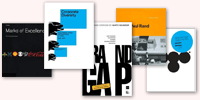
Opinion BY Armin
A “Thing” as Logo

With a population of roughly 75,000, the town of Burnley, Lancashire in England looks to be a perfectly picturesque English charmer. Not only is Burnley the birthplace of Gandalf but it’s also home to one of the hottest soccer teams of the moment, Burnley F.C., who have been reveling in their return to the premiere league after 33 years of being in the second tier league. All things considered, Burnley seems like the last place where you would find a highly computerized logo as its calling card.
Continue reading this entry

DATE: Oct.28.2009 POSTED BY: Armin
POSTED BY: Armin CATEGORY: Destinations
CATEGORY: Destinations  COMMENTS:
COMMENTS:

TAGS:

Opinion BY Armin
Gent, Colon, New Logo

I won’t even attempt to wax poetic about the city of Gent (also Ghent in English and Gand in French) in Belgium because, other than the amazingly picturesque photos oozing Old World charm I just browsed through and whatever I could regurgitate from Wikipedia or some other web site, I really know nothing about this city. I do know I would like to visit it. But I also know that it wouldn’t be because of a new marketing logo designed by the corporate branding division of Duval Guillaume.
Continue reading this entry

DATE: Jul.31.2009 POSTED BY: Armin
POSTED BY: Armin CATEGORY: Destinations
CATEGORY: Destinations  COMMENTS:
COMMENTS:

TAGS:

Opinion BY Armin
Pieces of Melbourne
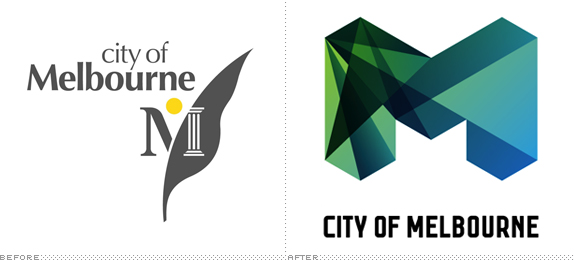
I must first say that I have never visited Melbourne (nor Australia for that matter) so any and all opinions about how this identity reference the peculiarities of the city are based on mere speculation and interpretation from afar. But it doesn’t take a local to recognize the progressive personality of the city and the rich visual landscape in which it thrives. Yesterday, Lord Mayor Robert Doyle unveiled a new identity that will represent the City of Melbourne, and provided plenty of rationale behind the new identity replacing a logo designed in the early 1990s.
Continue reading this entry

DATE: Jul.22.2009 POSTED BY: Armin
POSTED BY: Armin CATEGORY: Destinations
CATEGORY: Destinations  COMMENTS:
COMMENTS:

TAGS:

BY Armin
Standing Stilt
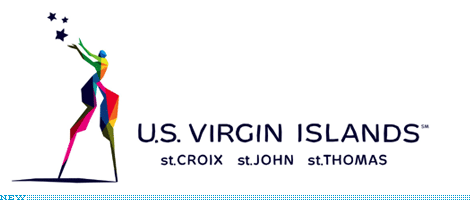
No matter where you are right now — specially on a Monday — the thought of being in a Caribbean island surely does not sound like the worst alternative to reading about logos on a blog. But if, like the rest of us, you are stuck in front of your monitor the least we can do is show you some design related to Caribbean islands. Earlier this year the Department of Tourism of the U.S. Virgin Islands launched a new identity, designed by J. Walter Thompson, with a Mocko Jumbie, a traditional stilt dancer, as its main icon.
Continue reading this entry

DATE: Jun.29.2009 POSTED BY: Armin
POSTED BY: Armin CATEGORY: Destinations
CATEGORY: Destinations  COMMENTS:
COMMENTS:

TAGS:

BY Armin
Cincinnati’s $75K Gift from Macy’s
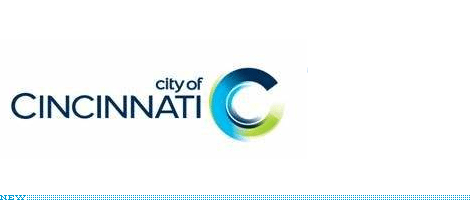
I was in Cincinnati last year for less than 24 hours and in that limited time I got to see some amazing architecture and get a little taste of the city, which feels nothing like the new logo for the official City of Cincinnati released last week. But it’s not the awkwardness of the new logo that stood out for me, but the fact that Cincinnati-based retail store Macy’s paid LPK’s design fee of $75,000. It’s like the ultimate Sugar Mama, paying for dinner, vacations and some branding. The logo has all the pitfalls of a weird logo: Odd lock-up, questionable typography (is it supposed to be small caps?), undecipherable meaning of icon and, in this case, just too many “C”s. It could be worse certainly, but as forward-looking as Cincinnati feels in its cityscape, this is rather limiting.
Thanks to Matt Barnes for the tip.

DATE: Jun.15.2009 POSTED BY: Armin
POSTED BY: Armin CATEGORY: Destinations
CATEGORY: Destinations  COMMENTS:
COMMENTS:

TAGS:

BY Joe Marianek
Something is Button in the State of Denmark
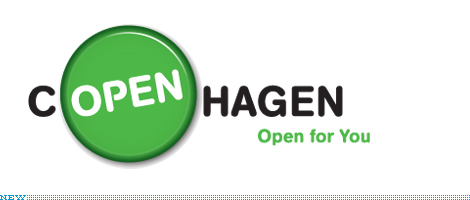
Copenhagen’s clever new campaign has a huge range. Open Copenhagen is designed to transcend and reinforce promotional efforts for tourism, business, events, investments, and more. Previously, each rogue group boosted their similar programs independently without any coordinated brand to tie it all together. OPEN COPENHAGEN arrives at a time when the city’s northern european neighbor cities have launched similarly rhetorical proposals to would-be visitors — I AMSTERDAM deploys a similar wordplay.
Continue reading this entry

DATE: May.21.2009 POSTED BY: J. Marianek
POSTED BY: J. Marianek CATEGORY: Destinations
CATEGORY: Destinations  COMMENTS:
COMMENTS:

TAGS:

BY Armin
Alberta Scripts a New Story
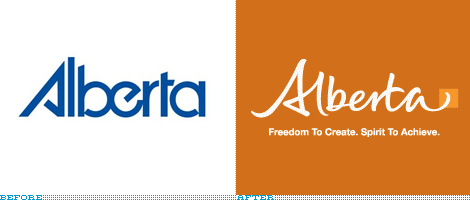
At the risk of offending our Canadian readers I will say that I don’t know much about the province of Alberta, except the passing knowledge about their oil sands and the potential environmental dangers they pose. Apparently, I’m the exact target audience for the new brand launched by the Government of Alberta this week.
Continue reading this entry

DATE: Mar.27.2009 POSTED BY: Armin
POSTED BY: Armin CATEGORY: Destinations
CATEGORY: Destinations  COMMENTS:
COMMENTS:

TAGS:

BY Armin
Live like you Hate the Logo
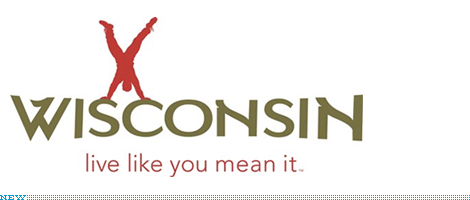
I debated quite a bit about posting this logo, because it’s like dangling a bloody bundle of fish in front of a great white shark — a great white shark that can hit “post.” Nonetheless, it’s a story that has made the news quite a bit and I think it’s worth giving it a formal run here on Brand New. Last Monday, Wisconsin Governor Jim Doyle unveiled the new logo and slogan for the Wisconsin Department of Tourism to help attract visitors to the state as well as helping it portray a positive image. Like most state or city logos, the Wisconsin logo has ignited plenty of criticism, and even though I am absolutely no fan of the logo I thought I could debunk a couple of its publicly mocked misgivings.
Continue reading this entry

DATE: Mar.20.2009 POSTED BY: Armin
POSTED BY: Armin CATEGORY: Destinations
CATEGORY: Destinations  COMMENTS:
COMMENTS:

TAGS:

BY Christian Palino
Viva La Rebrand

So the word is that France — home to the revolution, notable poets, an even more notable short emperor, lots of cheese, the largest erector set achievement the world’s ever seen, and the world’s hottest, recently-ex-italian first lady — hosted 82 million visitors last year who aren’t spending enough euros to make the country No. 1 in tourism revenue. Enter the France rebrand.
Continue reading this entry

DATE: Jan.12.2009 POSTED BY: Christian Palino
POSTED BY: Christian Palino CATEGORY: Destinations
CATEGORY: Destinations  COMMENTS:
COMMENTS:

TAGS:

BY Armin
Gimme an M!
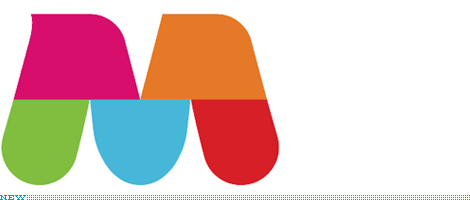
Through the Communauté métropolitaine de Montréal, Greater Montréal released in late October a new identity to brand the region, as part of its economic development strategy. The result is a contemporary M monogram that is divided in five parts to represent the five sectors that compose Greater Montréal and, in greater detail: “With its solid three-point footing, the monogram echoes the population’s roots and pragmatism. Its stylized and friendly curves reflect the straightforward and warm welcome offered by the regionís residents. Its modular interior can be easily adapted to display Greater Montréal’s many levels of diversity (geographic, economic, cultural, community, etc.).” The concept of dividing a logo as a patchwork of colors, textures and images isn’t anything new and it can apply to any city or corporation in the world, but in this case it is at least very well executed and handsome. The typography is very nice too and the whole program is cohesive and engaging, and it can all be seen at the web site linked aboved.
Thanks to Yotam Hadar for the tip. And apologies for the extra brevity or apparent hurriedness of this post; still traveling and with limited time and internet access.

DATE: Jan.05.2009 POSTED BY: Armin
POSTED BY: Armin CATEGORY: Destinations
CATEGORY: Destinations  COMMENTS:
COMMENTS:

TAGS:




























